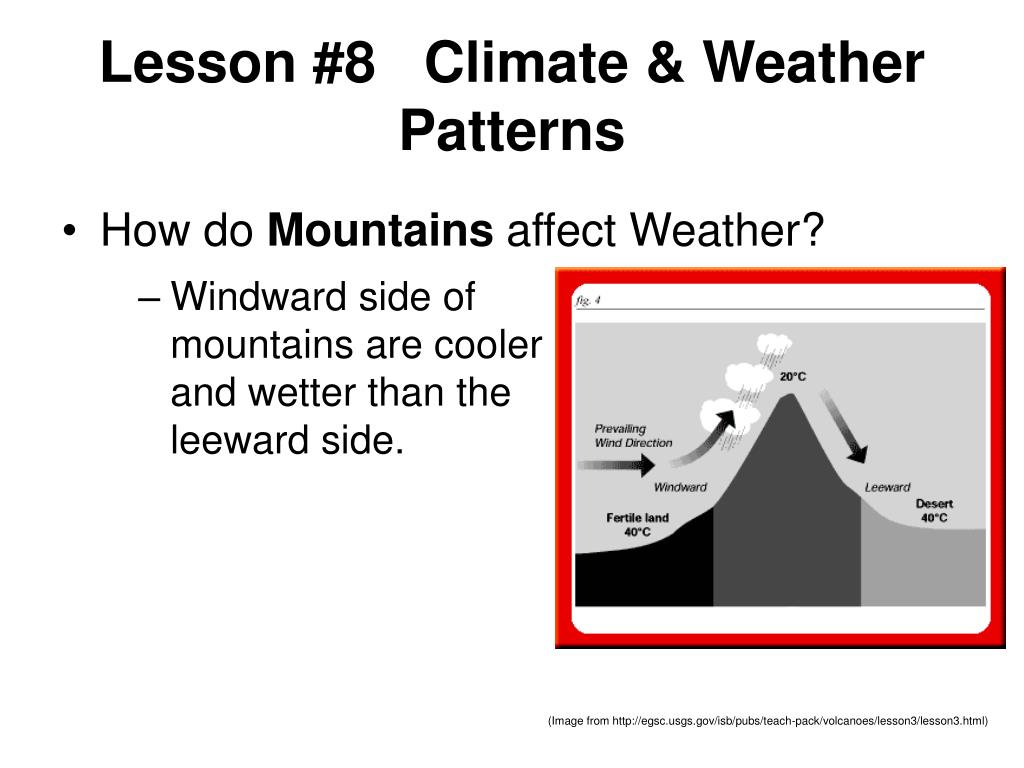
mountaincompetitive.blogspot.com
Mountains, those majestic giants that punctuate Earth’s landscape, possess an extraordinary influence on global weather and climate patterns. But how exactly do these colossal natural formations affect atmospheric conditions? Can their daunting presence on the surface lead to perplexing weather phenomena that challenge our understanding of meteorology? Indeed, they can, and this article will explore the intricate relationships between topography and climate dynamics.
The initial way that mountains affect weather is through a process known as orographic lift. As moist air ascends the mountain slopes, it cools and expands, leading to cloud formation. On the windward side of a mountain range, this process often results in increased precipitation, manifesting as rain or snow. Consequently, lush ecosystems flourish, providing rich biodiversity and an abundance of water resources. If you’ve ever wondered why some regions receive copious amounts of rainfall while others experience drought—mountains may hold the key to this climatic conundrum.
Once the air rises and cools, it reaches its dew point and condenses into precipitation. But what happens when this air descends on the leeward side? This brings forth a phenomenon termed the rain shadow effect. As the air cascades down the opposite slope, it warms and loses moisture, resulting in significantly drier conditions. This stark contrast can lead to starkly different climates within close proximity. For example, the Sierra Nevada range in California creates lush, green valleys on one side while leaving the other side barren and arid, contributing to the formation of deserts like the Great Basin.
It’s not just the physical elevation of mountains that alters regional climates; their geographical positioning plays a vital role as well. Mountain ranges can act as barriers that redirect prevailing winds. Areas that are sheltered from wind currents may experience calmer weather, while regions exposed to these winds may face fierce storms and unpredictable weather patterns. The Himalayas, for instance, serve as a formidable barrier to cold winds from Central Asia which in turn significantly impacts the climate of the Indian subcontinent.
Evidently, mountain ranges also influence temperatures at varying altitudes. The phenomenon of lapse rate dictates that temperatures tend to decrease with elevation. These cooler temperatures at high altitudes can contribute to the formation of glaciers, which act as significant regulators of global sea levels. When glaciers melt due to rising temperatures, they release freshwater into the oceans, exacerbating global warming and climate change. This raises an intriguing question: how can the actions of both humans and these magnificent formations interact to shape the future of our planet?
The interplay between mountains and climate extends far beyond mere precipitation levels or temperature variations. Understanding this complex relationship provides insight into broader environmental issues, including biodiversity, agriculture, and water resources. Mountain ecosystems are often rich in flora and fauna, many of which are endemic and reliant on specific climatic conditions. Changes in these conditions, whether from shifting weather patterns or human influence, can jeopardize these unique biomes.
Moreover, mountain regions are also critical for agriculture. The varying climatic zones created by elevation gradients enable different crops to thrive at different altitudes, thereby sustaining local economies. Farmers often utilize terracing to adapt to these conditions, yet as climate change accelerates, they face challenges that threaten their livelihoods. How adaptable can these agricultural practices remain when compounded by unpredictable shifts in weather patterns?
Furthermore, the glacial melt experienced in mountain ranges poses additional risks. Water from melting glaciers feeds into rivers that are essential for both ecosystems and human consumption downstream. As glaciers rapidly decrease in size, the immediate availability of water may be high, but this is a question with a grave temporal limitation. Future water shortages could ensue, intensifying conflicts over this vital resource and affecting millions of lives. What steps should be undertaken today to prepare for the repercussions of dwindling water supplies, particularly in mountainous regions that serve as natural water towers?
In addition to direct impacts, mountains can influence larger climatic phenomena, such as monsoons and atmospheric circulation patterns, on a global scale. The presence of significant mountain ranges can affect jet streams and alter weather systems far afield. For example, the Tibetan Plateau contributes indispensably to the Asian monsoon system through its elevation and heat absorption, fostering life-sustaining rainfall across vast areas during critical growing seasons.
On a microclimatic scale, small ranges or even isolated peaks can drastically affect local weather. Think about the local legends or folklore that surround these mysterious elevations. They often arise not just from the captivating vistas but also from their unpredictable weather changes—mountains can encompass storms that appear suddenly, leaving travelers at their mercy. As climate patterns continue to shift and evolve, such unpredictability may become increasingly commonplace.
As we navigate the complexities of our shifting climate, it remains imperative to consider the role of mountains. They are not just passive observers on Earth’s stage; they are active participants in the drumbeat of climate dynamics. Understanding their influence not only enhances our knowledge but also empowers us to mitigate adverse effects and protect these precious ecosystems. How can humanity develop strategies to confront these monumental challenges? Addressing such questions is critical for the well-being of our planet and future generations. In summary, mountains hold extraordinary power over weather and climate patterns, emphasizing the need for a deeper appreciation and understanding of their profound impact.




